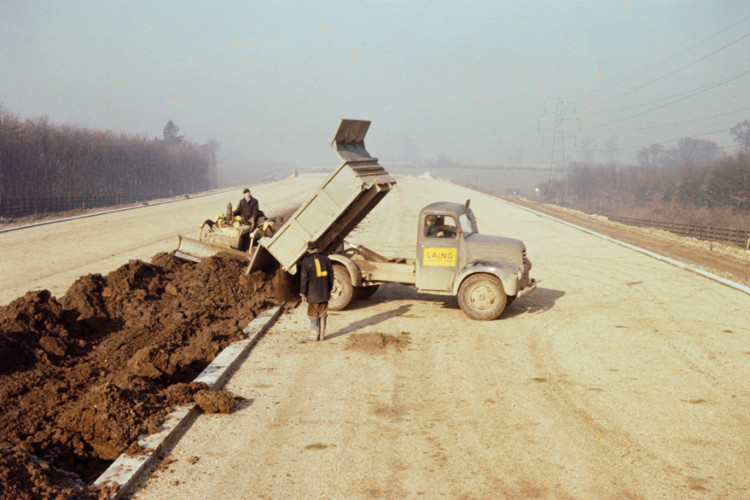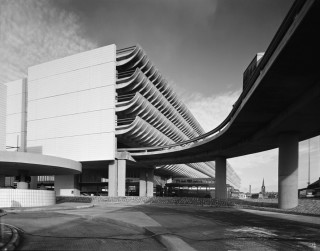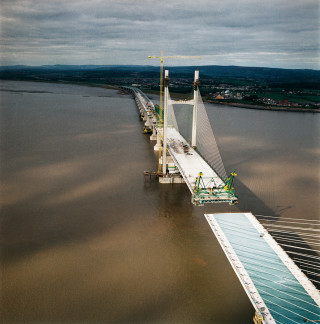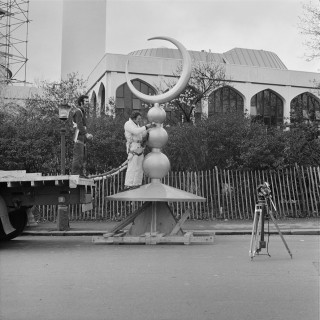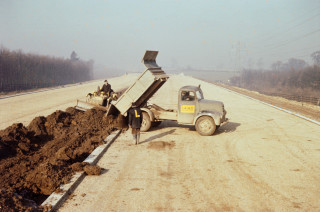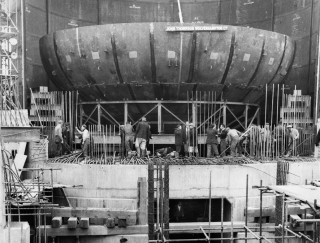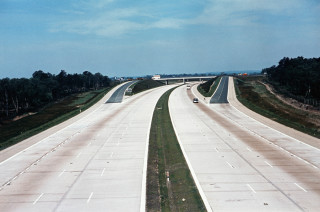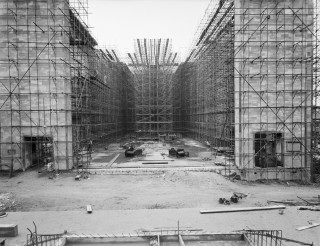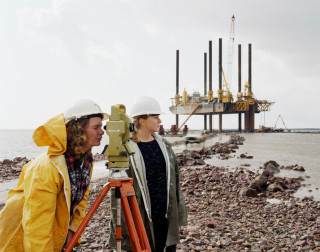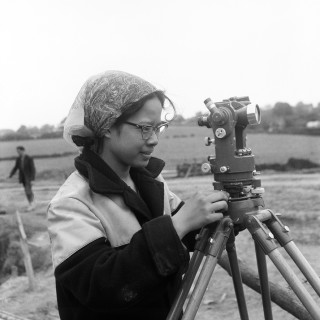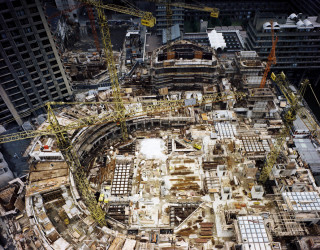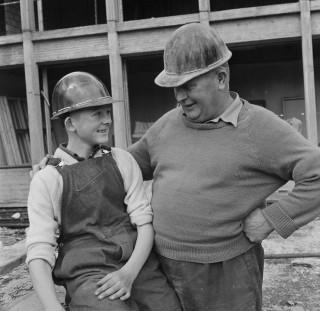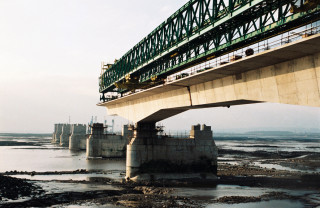When, in 2001, the concrete frame contractor O’Rourke snapped up the battered remnants of John Laing Construction for a token £1, it was widely viewed as the ignominious end of a once-great British construction dynasty.
Ray O’Rourke undoubtedly never saw it in those terms and, indeed, the business, in its new incarnation as Laing O’Rourke, has continued to trade as the UK’s biggest family-owned contractor – even if it’s a different family these days.
O’Rourke might have the business, but he doesn’t own the heritage. John Laing Group, though no longer in the contracting business, still exists as a property developer, facilities manager and PFI operator and, even if it doesn’t build anything, it can still claim to be the standard-bearer of the John Laing tradition.
This heritage is graphically demonstrated by the existence of the John Laing Photographic Collection, a pictorial record of the company’s construction achievements in days gone by.
Now, in collaboration with Historic England (the government’s historic buildings and monuments commission) the John Laing Charitable Trust has released 2,000 newly-digitised images, the first batch of a total 10,000 that will be made available to the public by the end of this year.
The project, called Breaking New Ground, “explores the history of constructing modern Britain” through the John Laing Photographic Collection.
The collection, which is held by the Historic England Archive, contains over 230,000 images charting John Laing’s construction work over the past century. “It offers an unparalleled insight into the origins of iconic British buildings, the construction of important national infrastructure projects and the increasing professionalism of the construction industry over the course of the 20th century,” says Historic England.
The Laing construction dynasty can be traced back to 1848 when James Laing set up a building business in Carlisle. The company grew steadily and in 1953 John Laing & Son (Holdings) was listed on the London Stock Exchange.
The business had a hand in some of the UK’s landmark projects of the 20th century, including construction of the M1 and M6 motorways (which compete for the title of the UK’s first proper motorway), Sizewell B nuclear power station and the new Coventry Cathedral.
Throughout the century, Laing employed photographers to record its work and as a consequence the archive includes unique images of some of Britain’s most important infrastructure projects and public buildings as they were taking shape.
The Breaking New Ground project will involve the digitisation of 10,000 images selected from the Laing collection, making these accessible to the public via the Historic England website.
It will also include a process of public engagement, primarily in collaboration with schools around the country, with ex-Laing construction workers using the photographic material to share their experiences with schoolchildren and other members of the public.
Already, Historic England has hosted workshops in Swindon and Bristol, with further workshops planned for primary schools in London, Coventry and Carlisle.
Among the contributors to the Swindon workshop was John McGuinness, a cost surveyor with Laing from 1960, who worked on housing developments using Laing’s Easiform in-situ concrete building system (a reminder that “modern methods of construction” are nothing new).
“The sites I worked on with Laing ranged from brick and concrete housing to projects including the London Central Mosque and the British Library,” recalls McGuinness. “I hope the workshop gave the children insight into the urgent housing shortages in the 1950s and 1960s after the Second World War, and the new and innovative methods of house construction which were used in their area.”
Knowledge of the housing crisis of the post-war period might indeed prove valuable given the chronic shortage of affordable homes available to today’s Millennials and Generation Z.
Perhaps it’s time to revive Laing’s Easiform design?
October 1969
Preston Bus Station under construction. Designed by Building Design Partnership, engineered by Ove Arup and built by Laing, the structure was given Grade II listed status in September 2013
October 1995
A shot of the Second Severn Crossing under construction taken from high above the deck
March 1977
Workers attaching the crescent finial to a crane hook outside the London Central Mosque, ready for it to be lifted onto the domed roof of the prayer hall. The finial was manufactured from glass-fibre reinforced concrete and painted to give a gold-coloured finish
Circa 1958/1959
Workers constructing the central reservation of the M1 motorway

October 1957
Workers on the Berkeley nuclear power station project straightening steel rebar at the base of a pressure vessel dome within the thermal shield
CIRCA 1960
An almost empty M6 ‘Midland Link’ motorway photographed following its completion
August 1959
This photograph shows scaffolding erected inside the new Coventry Cathedral during its construction
September 1992
Student engineer Jacqueline Bowker and chain girl Anita Manning at work on the Second Severn Crossing in September 1992. In the background is the Jay Robertson, a jack-up barge which was used to install piles through the sea bed for two viaduct support piers close to the Severn Rail Tunnel. This photograph appeared in the December 1992 issue of Laing’s Team Spirit newsletter
July 1961
Kik Hong Ong – John Laing’s first female civil engineer – photographed at work on M6 Sections C/D. When this photograph was taken, Kik Hong Ong was a 21-year-old student at London University and had joined Laing for work experience over the summer vacation. This image, along with a short article, was published in the September 1961 issue of Laing’s newsletter Team Spirit
June 1978
A view of the Barbican Arts Centre under construction. Work started on London’s Barbican development in 1962 and was completed in six phases by various contractors. In 1964 John Laing & Son won the tender for housing phase III, finishing Speed House in 1968. The company was also responsible for the construction of the Barbican Arts Centre (phase V) which was started in the early 1970s and completed in 1981
September 1962
Not a ventriloquist with his dummy, but two Laing workers on the Carlisle Civic Centre construction site photographed in September 1962. The younger of the two – by the name of Blackett – was one of the newest members of the team. His mentor on the right is foreman bricklayer Harry Varah
CIRCA 1994
The partially constructed Second Severn Crossing photographed from the shore
This article was first published in the February 2020 issue of The Construction Index magazine.
UK readers can have their own copy of the magazine, in real paper, posted through their letterbox each month by taking out an annual subscription for just £50 a year. Click for details.
Got a story? Email news@theconstructionindex.co.uk

